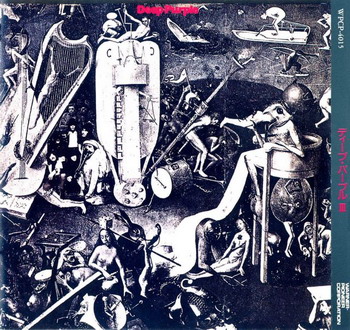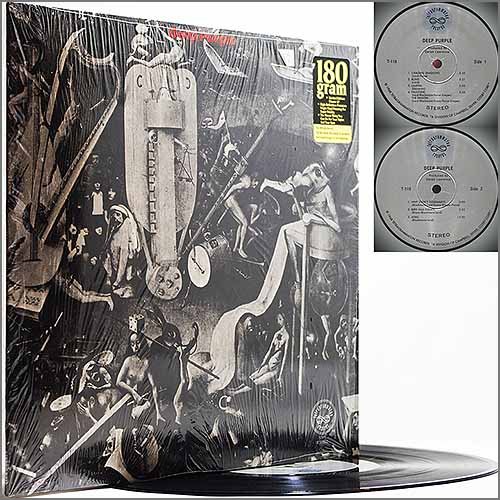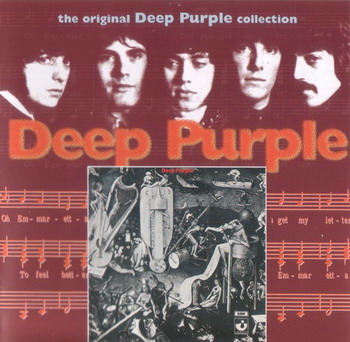THE ROLLING STONES «Discography» (20 × CD · London ⁄ Polydor K.K. · Issue 1989)
Performer: THE ROLLING STONES / ザ・ローリング・ストーンズ Album / collection: «Discography / ディスコグラフィー» Series: Japan First Press Series— Label: (c)(p) 1964-1972 London / PolyGram / Polydor K.K. Source: Rip by KoGGaN™ scans by inet… Official DR value: •12•10•11•11•11•12•12• •11•10•11•11•12•10•11•11•12•13•12•11•11• Catalog (Barcode): much… Genre / Style: Rock, Blues Rock, Rock " alt="">

THE ROLLING STONES «Discography» (20 × CD · London ⁄ Polydor K.K. · Issue 1989)
Performer: THE ROLLING STONES / ザ・ローリング・ストーンズ Album / collection: «Discography / ディスコグラフィー» Series: Japan First Press Series— Label: (c)(p) 1964-1972 London / PolyGram / Polydor K.K. Source: Rip by KoGGaN™ scans by inet… Official DR value: •12•10•11•11•11•12•12• •11•10•11•11•12•10•11•11•12•13•12•11•11• Catalog (Barcode): much… Genre / Style: Rock, Blues Rock, Rock " alt="">
03 10, 2025
Rick Springfield – Original Album Classics (2014) 5CD
Artist: Rick Springfield Title Of Album: Original Album Classics Year Of Release: 2014 Label (Catalog#) :RCA, Sony Music, Legacy [88843045222] Country:: USA Genre: Pop Rock, Power Pop Quality: FLAC (tracks+cue,log) Bitrate: Lossless Time: 03:21:19 Full Size: 1.45Gb(+3%)(covers) Info: wiki Upload: xfile.cloud

Rick Springfield – Original Album Classics (2014) 5CD
Artist: Rick Springfield Title Of Album: Original Album Classics Year Of Release: 2014 Label (Catalog#) :RCA, Sony Music, Legacy [88843045222] Country:: USA Genre: Pop Rock, Power Pop Quality: FLAC (tracks+cue,log) Bitrate: Lossless Time: 03:21:19 Full Size: 1.45Gb(+3%)(covers) Info: wiki Upload: xfile.cloud
03 10, 2025
REO Speedwagon: 1971-1980 10 Mini LP CD • DSD Mastering 2011 / Hi Infidelity 2CD Set 30 Anniversary Edition Digital Remaster 2011 ● 40 Anniversary
Lossless Galaxy Release REO Speedwagon: 1971-1980 10 Mini LP CD 40 Anniversary ● DSD Mastering 2011 REO Speedwagon: Hi Infidelity 2CD Set 30th Anniversary Edition 40 Anniversary ● Digital Remaster 2011 Epic Records / Sony Music Japan Performer: REO Speedwagon Albums: -------------- ☆☆☆☆☆☆☆☆☆☆☆ -------------- 1971 REO Speedwagon ● 1972 R.E.O/T.W.O. Epic Records / Sony Music Japan Mini LP CD 2011 ● EICP-1480/EICP-1481 -------------- ☆☆☆☆☆☆☆☆☆☆☆ -------------- 1973 Ridin' The Storm Out ● 1974

REO Speedwagon: 1971-1980 10 Mini LP CD • DSD Mastering 2011 / Hi Infidelity 2CD Set 30 Anniversary Edition Digital Remaster 2011 ● 40 Anniversary
Lossless Galaxy Release REO Speedwagon: 1971-1980 10 Mini LP CD 40 Anniversary ● DSD Mastering 2011 REO Speedwagon: Hi Infidelity 2CD Set 30th Anniversary Edition 40 Anniversary ● Digital Remaster 2011 Epic Records / Sony Music Japan Performer: REO Speedwagon Albums: -------------- ☆☆☆☆☆☆☆☆☆☆☆ -------------- 1971 REO Speedwagon ● 1972 R.E.O/T.W.O. Epic Records / Sony Music Japan Mini LP CD 2011 ● EICP-1480/EICP-1481 -------------- ☆☆☆☆☆☆☆☆☆☆☆ -------------- 1973 Ridin' The Storm Out ● 1974
03 10, 2025
Жанры
Lossless Galaxy Release
Русская музыка
--Поп
--Рок
--Панк
--Альтернатива
--Металл
--Рэп, Хип-Хоп, R'n'B
--Джаз и Блюз
--Фолк
--Шансон, Авторская песня
--СССР
Зарубежная музыка
--Pop
--Rock
--Hard Rock
--Progressive & Art-Rock
--Pop-Rock & Soft Rock
--Instrumental Rock
--Heavy, Traditional, Industrial Metal
--Power, Gothic, Sympho Metal
--Thrash, Speed, Groove, Modern Metal
--Death, Melodic Death, Doom, Dark Metal
--Black, Pagan, Folk, Viking Metal
--Alternative
--Punk
--Disco, Eurodance
--Rap, Hip Hop, R'n'B
--Reggae, Ska, Dub
--Jazz, Blues, Soul
--Folk, Country, Ethnic
--Electronic, Ambient, New Wave
--House, Techno, Trance
Другие жанры
--New Age, Relax, Meditative & Flamenco
--Chillout, Lounge, Downtempo, Trip-Hop
--Drum & Bass, Jungle, Breakbeat, IDM
--Classical / Классическая музыка
--Soundtrack
--Музыкальные сказки
Vinyl Rip
HI-Res / DVD-Audio / DTS
--SACD
--DSD
--DVD-Audio
Сборники Lossless-Galaxy
Альбомы 2022
Альбомы 2023
Альбомы 2024
Теги
1st Press 2022 2023 2024 2025 70... AOR Black Metal Blues Blues Rock Bootleg Series Classic Rock Death Metal Discography Exclusive for Lossless-Galaxy Folk Rock Fusion Hard Rock Heavy Metal Hi-Res Japanese Edition Jazz Jazz Rock lossless Melodic Death Metal Melodic Rock Modern Electric Blues Pop Pop Rock Power Metal Prog Rock Progressive Metal Progressive Rock Psych Rock Psychedelic Rock Rock SACD Symphonic Metal Thrash Metal Дискографии от KoGGaN
Архивы
Опрос
В каком формате хотели бы видеть релизы на сайте ?
 Автор: LeddZepp, 31 марта 2024, Комментариев: 0, Просмотров: 339
Автор: LeddZepp, 31 марта 2024, Комментариев: 0, Просмотров: 339Deep Purple - Deep Purple [Vinyl Rip, 180 gram] (1969)
![Deep Purple - Deep Purple [Vinyl Rip, 180 gram] (1969)](/uploads/posts/2024-03/deeppurple69deeppurple_500_lp_24x96.jpg)
Year: 21 June 1969 (US), September 1969 (UK) (LP 20??)
Label: Tetragrammaton Records (US), T-119
Style: Hard Rock
Country: London, England
Time: 44:14
Format: Flac Tracks 24/96 kHz
Size: 926 Mb
Хочу разбавить десятки более низким баллом, хотя 8 баллов - тоже вполне неплохо.
Действительно, весьма необычная для DP работа, да, довольно хорошая. Но назвать это шедевром на все времена язык не поворачивается, и я попытаюсь объяснить почему.
На фоне нескольких совершенно шедевральных композиций, таких как "Blind", "Lalena" и, конечно же, "April", записано небольшое количество средних песен, которые хоть и блещут оригинальностью, но назвать их замечательными я не могу.
1) "Chasing Shadows". Не самая удачная песня для открытия альбома. Вокал звучит как-то вяло, а вся музыка построена на игре Пейса (причем в авторстве он не значится). Поется, кстати, о кошмарных снах Джона Лорда.
2) "Blind". Первая изюминка альбома! Замечательное клавесинное произведение, которое просто пропитано какой-то зимней атмосферой. Единственный недостаток - вокал. Не скажу, что все совсем плохо, но поразить Эвансу не удалось.
3) "Lalena". Единственный кавер на альбоме. Просто замечательная песня, в которой органные партии настолько красивы, что пробивают до слез...Да и Род отлично спел.
4) "Medley" - трэк, состоящий из двух песен:
"Fault Line" - традиционный инструментал DP "первого набора", довольно агрессивная вещь.
"The Painter" - плохо запоминающийся трек, ничего особенного.
5) "Why Didn't Rosemary" - песня с довольно интересной мелодикой, после 3-4 прослушиваний очень цепляет.
6) "Bird Has Flown" - напоминает предыдущий трек по звучанию. В припеве Род Эванс поет басом, что мне очень понравилось.
7) "April". А вот это ПРОИЗВЕДЕНИЕ. Именно так! Действительно классика, одна из лучших вещей DP, показывает группу с ее "настоящей" стороны. Тут заметно влияние музыки эпохи Ренессанса и барроко, в чем, естественно, заслуга Блэкмора и Лорда. Кстати, Блэкмор написал всю мелодию, кроме оркестрового отрезка в середине.
Записан альбом паршиво, предыдущие два звучали намного лучше. Интересна обложка - она в точности отражает весеннюю (кроме "Blind" - поздний февраль) атмосферу альбома.
Нельзя не сказать, что из всех музыкантов тут чаще и лучше всего слышится игра Джона Лорда. Вокал Рода Эванса меня вообще почти не удивил, и я не удивляюсь, что Блэкмор захотел сменить вокалиста. На прошлых альбомах Род пел намного лучше. К слову, гитара Ричи здесь записана отвратительно, да и в общем его партий на альбоме очень мало. Зато ритм-секция неплохая, хотя неплохая в случае с Пейсом - это шедевральная по сравнению с ударниками "новой" волны рок-музыки...
В итоге, стоит сказать, что это пусть и не самый сильный альбом Purple, но один из самых атмосферных.
(richardblackmore.ru/diskografiya/deep-purple/retsenziya-na-deep-purple) Lord Raiden. Источник: darkside.ru
Rod Evans – lead vocals
Ritchie Blackmore – guitar
Jon Lord – keyboards, backing vocals
Nick Simper – bass, backing vocals
Ian Paice – drums
Derek Lawrence – producer, mixing
01. A1 Chasing Shadows (05:34)
02. A2 Blind (05:25)
03. A3 Lalena (05:04)
04. A4a Fault Line, A4b The Painter (05:34)
05. B1 Why Didn't Rosemary (05:01)
06. B2 Bird Has Flown (05:33)
07. B3 April (12:00)
При желании можно посмотреть все мои публикации на сайте. Приятного прослушивания. Жмём и смотрим (Click to see all of my posts)!
Внимание! У Вас нет прав для просмотра скрытого текста.
Похожие новости:
Комментарии отсутствуют
Добавить комментарий!
Информация
Посетители, находящиеся в группе Гости, не могут оставлять комментарии к данной публикации.



![Deep Purple - Deep Purple (1969) [24/48 Hi-Res]](/uploads/posts/2023-04/rshgabr.jpg)

![Deep Purple - Deep Purple (1969) [Reissue 1976 | Vinyl Rip 1/5.64]](/uploads/posts/2024-02/1707921603_front-kopija.jpg)